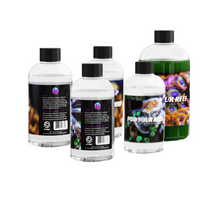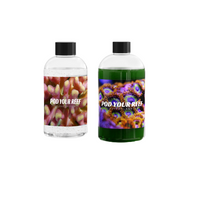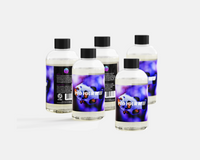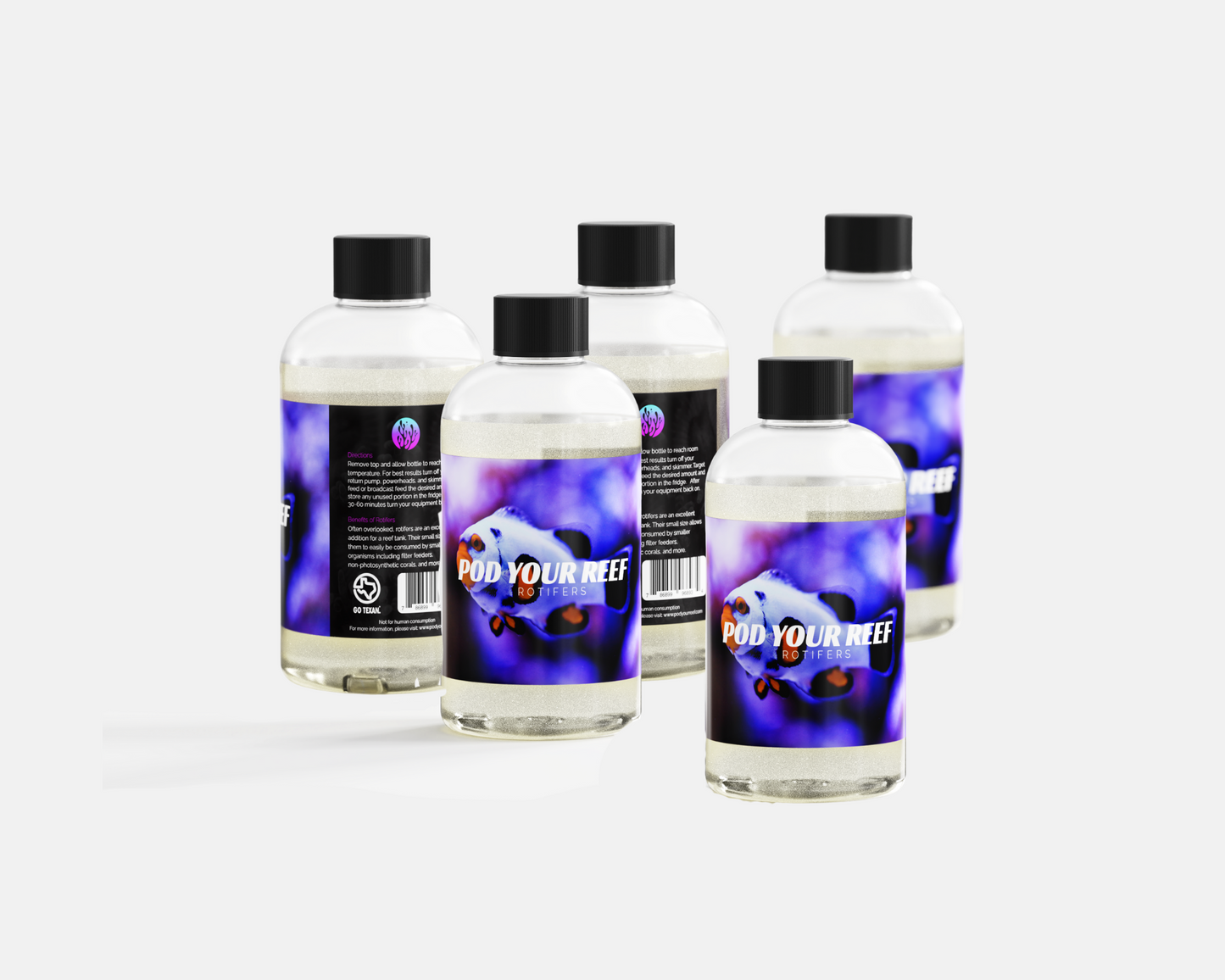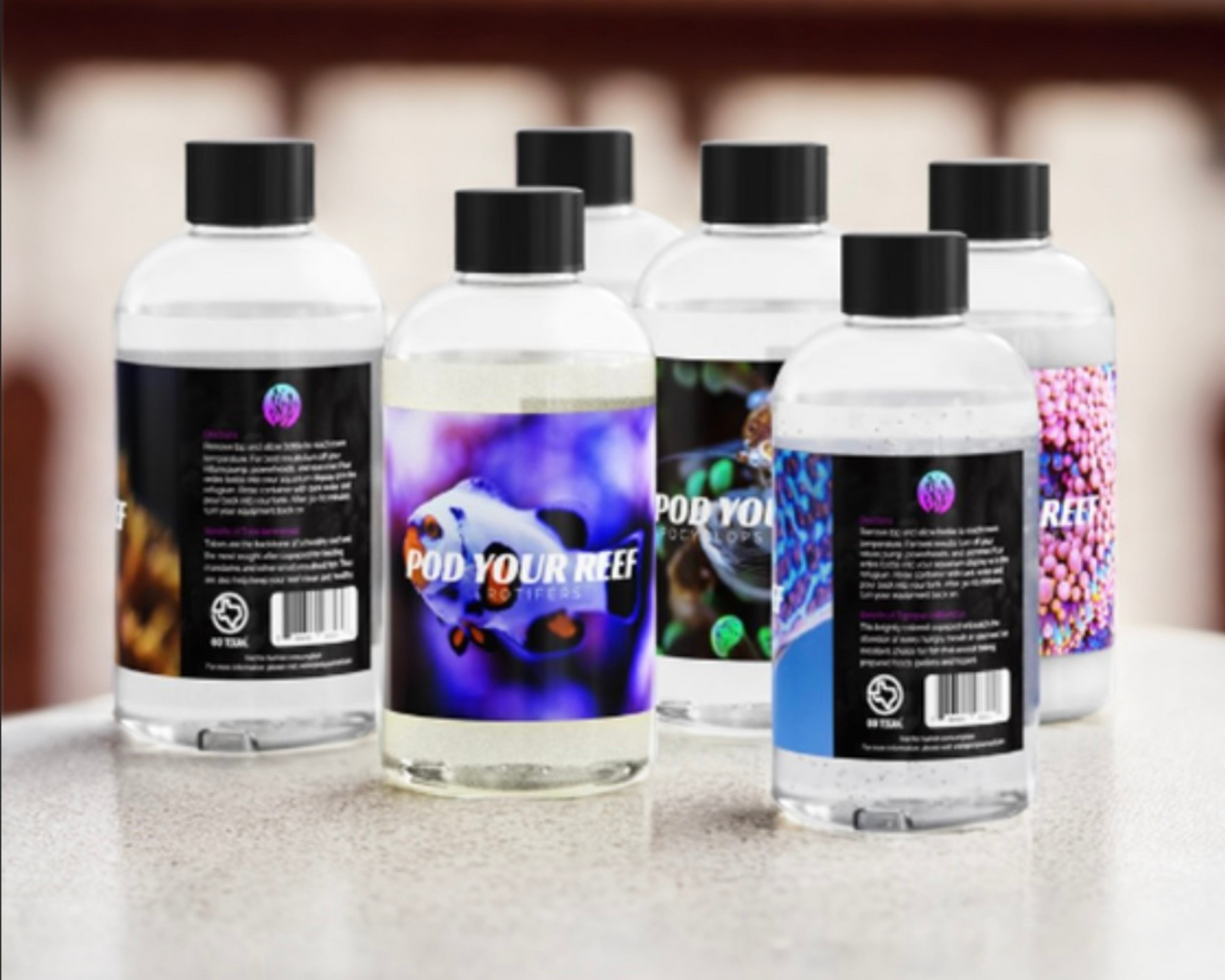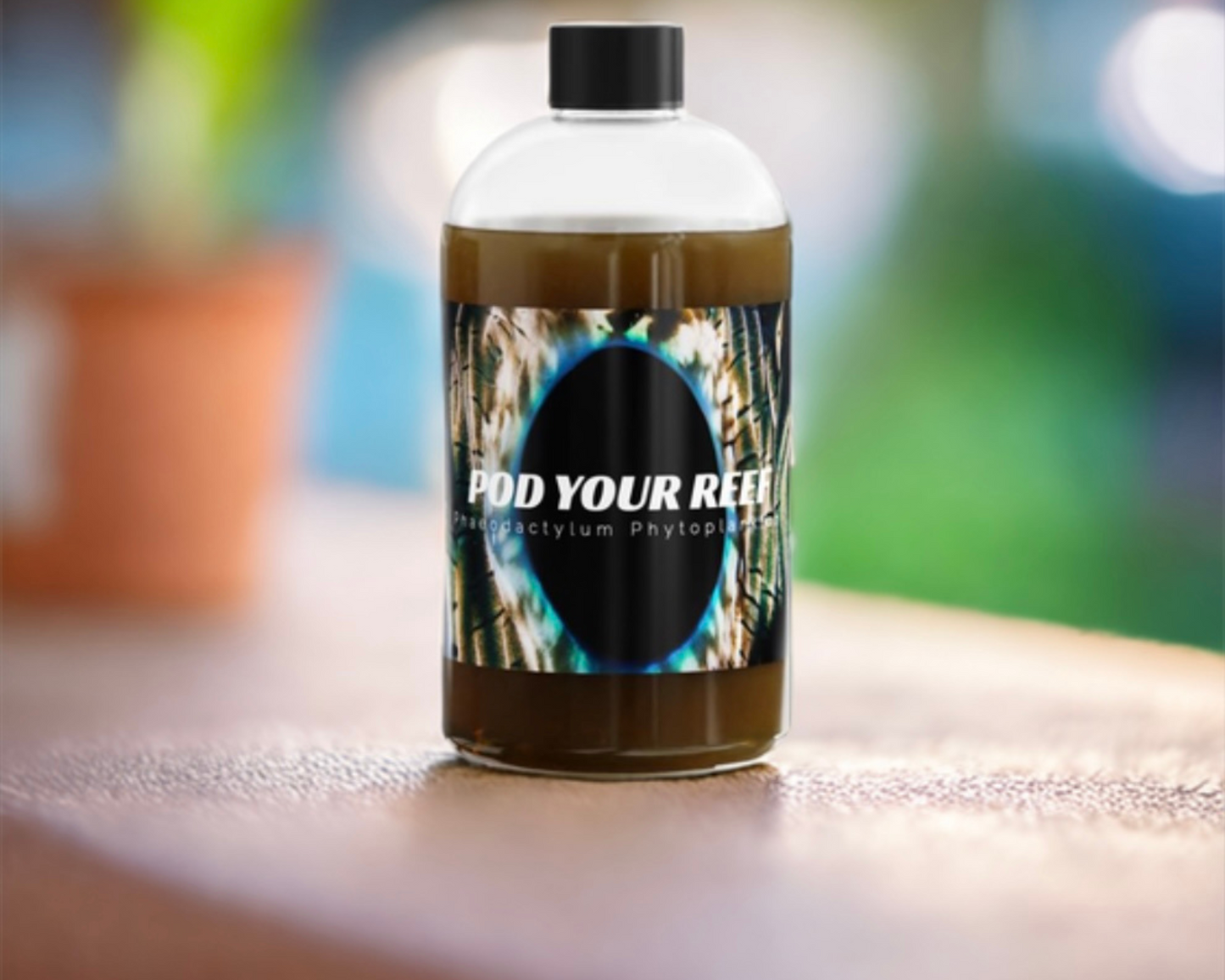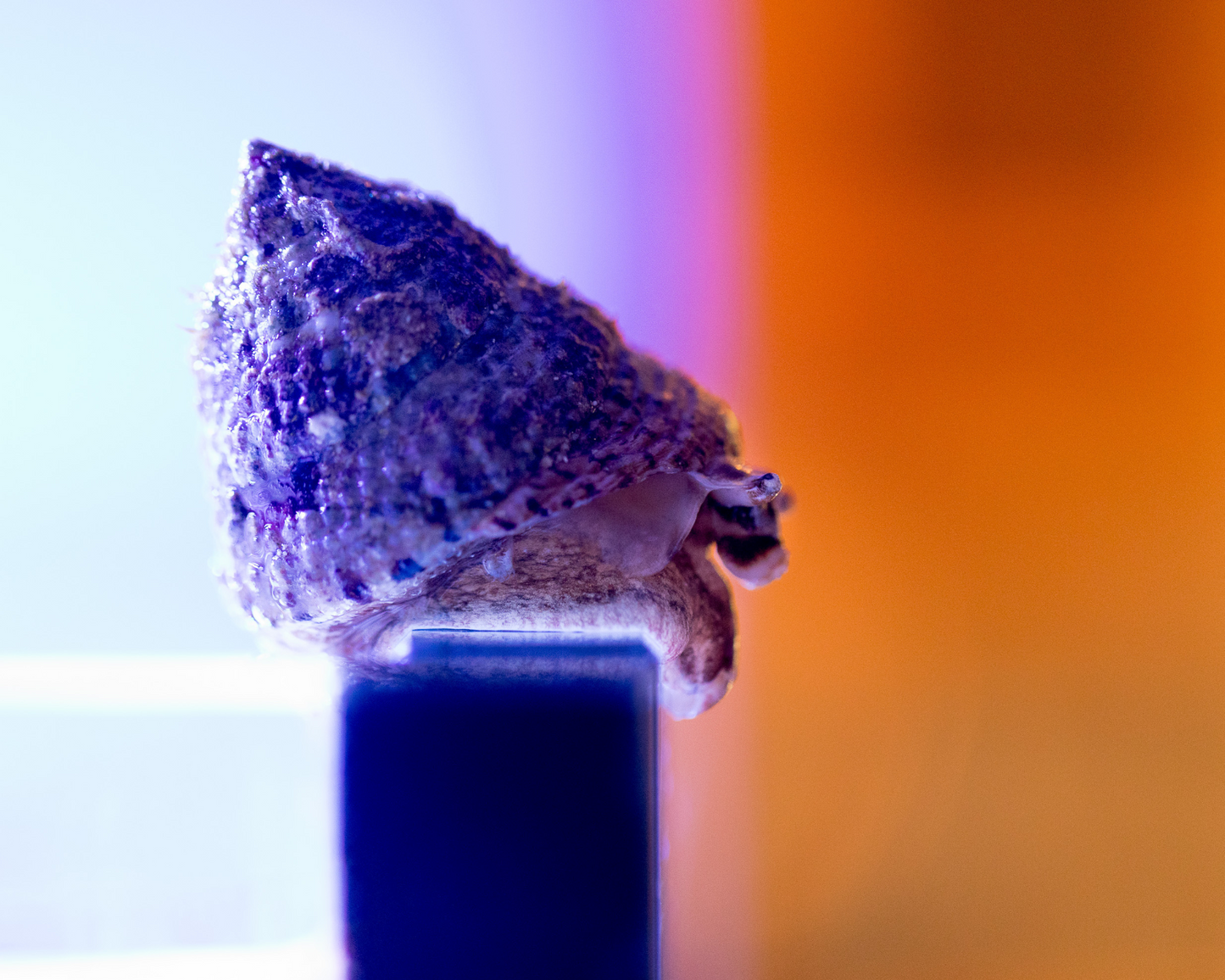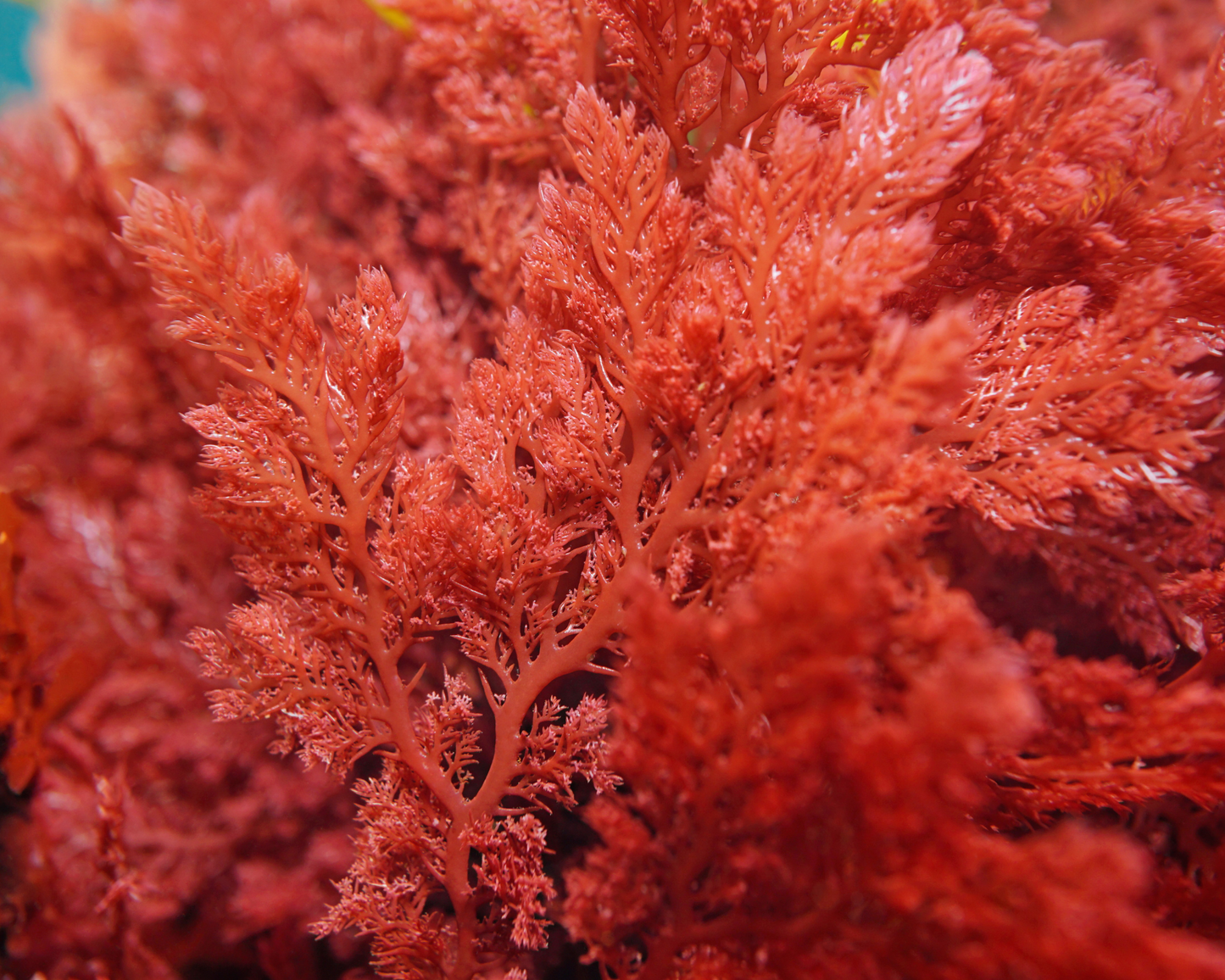Save $10
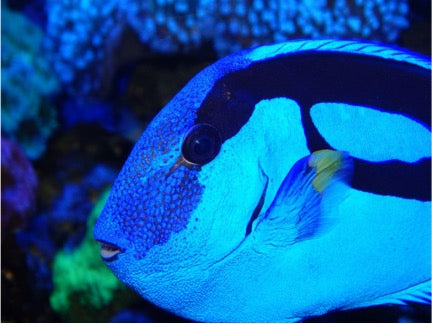
Using Refugium Macroalgae to Feed Charismatic Reef Herbivores
Acanthurans (tangs, surgeonfish) and siganids (rabbitfish) are some of the most iconic families of fish present in the modern reef hobby. These fish are colorful, charismatic and have captured the imaginations of novice and adept reefers alike. Two of the greatest obstacles to keeping such fish alive are 1) keeping stable water quality and 2) proper nutrition. A well-planned refugium complete with a robust macroalgae garden acts to suit both those needs! “Sea Vegetables” (Ulva, Gracilaria, Porphyra, Chaetomorpha etc.) are ravenous consumers of nitrogenous wastes (Ammonia, Nitrates), to which such species are particularly sensitive to. Sea veggies then incorporate that waste into their tissues, growing in number and size. Robust seaweed gardens can outgrow a refugium, which is why periodic harvesting is required. Many reefers sell off or throw out their excess macroalgae--when they should consider feeding it to their prized herbivores!
Tangs Feed on Live Macroalgae--It’s Their Natural Ecology!
Tangs, rabbitfish and other herbivorous reef fish have evolved to extract nutrition from macroalgae. In order to do this, they have a gut microbiome equipped with a specialized array of cellulolytic bacteria. These bacteria ferment sea veggies so that their nutrition can be extracted. These bacteria also facilitate the formation of fat bodies within the mesenteries of the gut. It is this specialized system which makes for plump, active, well-aged fish. Experienced reefers will note that in some aquariums, tangs grow to immense sizes and often outgrow the system. While in other aquariums, tangs and rabbitfish, which have lived there for years, never really increase in size. The key to preventing stunted growth lies in the proper establishment of the herbivore’s gut microbiome. Miyake et al 2015 demonstrates how tangs and other herbivorous fish, have a far more established gut-microbiome which is a crucial intermediary between the fish’s feed and its nutrition. Whereas the gut microbiome of carnivores is relatively transient, changing between meals, the gut microbiome of marine herbivores remained relatively static, leading to the likelihood that early feedings/inoculation of gut microbiota are crucial to ‘setting up’ the digestive machinery of such fish.
The microbiota associated with the epilithic algal food source was similar to that of the juvenile midgut and gut wall but differed from the microbiome of the hindgut. A core bacterial community including members of taxa Epulopiscium and Brevinemataceae was observed across all gastrointestinal and diet samples, suggesting that these bacterial symbionts can be acquired by juvenile convict surgeonfish horizontally via their diet and then are retained into adulthood.
It is equally likely that the fermentative, cellulolytic microbes needed inside the guts of tangs and other herbivores are acquired through the fish’s diet. Great advancements have been made in supplementing commercial fish feeds with every sort of dietary necessity. But much of this nutrition may be biologically unavailable to herbivores devoid of a well-established gut microbiome. This is where Sea Veggies show tremendous value as a source of prebiotics and live probiotics to herbivorous fish. It is for this reason that dozens of marine herbivore species are raised in macro-algae enriched nursery ponds. Through this practice, the gut microbiome is fortified by natural feed so that the young herbivorous fish may best utilize pelleted feed when they are larger. Scientific understanding of the early microbiome-acquisition of these species is still in its infancy, yet is ever-more important with younger and younger specimens entering the hobby.
Sea Veggies: A Sustainable, Beautiful Functional Food
Gracilaria, Ulva, and Porphyra are all excellent examples of hardy, attractive macroalgae species which can be stocked into a refugium. Under the proper lighting and flow conditions, these Sea Veggies gorge on the nitrogenous wastes and excess phosphates which threaten to destabilize reef ecosystems. They convert these wastes into more sea vegetable tissue, but also act as a substrate for cellulolytic bacteria and a diversity of other microbes. Once the Sea Vegetable garden grows to excess, it can be trimmed and offered to the tangs, rabbitfish and
other herbivores of the display tank. These herbivores not only benefit from the nutrition of the seaweed itself, but from the seeding of probiotics they receive from consuming a natural feed. Sea Vegetable Garden Refugiums are the best way to offer your herbivores a continual supply of fresh, live probiotic-rich seaweed derived from the sustainable disposal of a reef’s waste.
A Brief Note: Mastering Nutrition Will Keep Tangs in the Hobby
Species such as the blue hippo tang, yellow tang and yellow foxface rabbitfish are iconic to the general public and thus have been stocked into countless aquaria over the years. As the hobby expanded, so did the demand for these classic species, which were then fished from the wild. In recent years, there has been ecological, economic and political pushback to this mass wild collection. In 2020, Hawaii banned the collection of reef fish for the aquarium trade. Similar export complications have begun in the Indo-Pacific region. This means that wild-caught specimens will become dramatically more difficult to acquire in the future. Rather than allow these magnificent species to vanish from the hobby, the natural response to this is to farm them. In 2015, the University of Hawaii aquacultured the first yellow tangs. The following year, UForida bred the first hippo tangs. In countries such as the Philippines, various rabbit fish have been aquacultured for decades as food fish. The key to producing enough of these fish to bring prices closer to wild-caught levels, is to better understand their nutrition, allowing them to be healthier, live longer and reproduce in captivity. By feeding our herbivores a diet more closely resembling their natural one, we help ensure that these magnificent animals will remain ever-present in the wild and in our reefs.
A Note on Buying Clean Macroalgae
The reason I always recommend the purchase of fresh macroalgae culture when starting a new tank, is the security of knowing that your seaweed is free of pests and hitchhikers. Pod Your Reef guarantees that all of its Sea Veggies are 100% quarantined, treated and pest-free.
Literature Cited
BRITO, C. C. P., Araujo, J. L., Marquez-Velasquez, V., SILVA, M. B., & Rosa, R. S. (2019). First record of dorsal and anal fin deformities in blue tang Acanthurus coeruleus (Acanthuridae, Actinopterygii) from northeastern Brazil. Anais da Academia Brasileira de Ciências, 91(4).
Chiarello, M., Auguet, J. C., Bettarel, Y., Bouvier, C., Claverie, T., Graham, N. A., ... & Villéger, S. (2018). Skin microbiome of coral reef fish is highly variable and driven by host phylogeny and diet. Microbiome, 6(1), 1-14.
Croft, L. The Effect of Dietary Vitamin C Levels on the Development of Head and Lateral Line Erosion Syndrome (HLLES) in Ocean Surgeonfish (Acanthurus bahianus) IAAAM Archive.
Crossman, D. J., Choat, J. H., & Clements, K. D. (2005). Nutritional ecology of nominally herbivorous fishes on coral reefs. Marine Ecology Progress Series, 296, 129-142.
Duray, M. N. (1998). Biology and culture of siganids. Aquaculture Department, Southeast Asian Fisheries Development Center.
DiMaggio, M. A., Cassiano, E. J., Barden, K. P., Ramee, S. W., Ohs, C. L., & Watson, C. A. (2017). First record of captive larval culture and metamorphosis of the Pacific blue tang, Paracanthurus hepatus. Journal of the world Aquaculture Society, 48(3), 393-401.
Ezzat, L., Lamy, T., Maher, R. L., Munsterman, K. S., Landfield, K., Schmeltzer, E. R., ... & Thurber, R. V. (2019). Surgeonfish feces increase microbial opportunism in reef-building corals. Marine Ecology Progress Series, 631, 81-97.
Fishelson, L., Montgomery, L. W., & Myrberg Jr, A. H. (1987). Biology of surgeonfish Acanthurus nigrofuscus with emphasis on changeover in diet and annual gonadal cycles. Marine Ecology Progress Series, 37-47.
Francini-Filho, R. B., Ferreira, C. M., Coni, E. O. C., De Moura, R. L., & Kaufman, L. (2010). Foraging activity of roving herbivorous reef fish (Acanthuridae and Scaridae) in eastern Brazil: influence of resource availability and interference competition. Marine Biological Association of the United Kingdom. Journal of the Marine Biological Association of the United Kingdom, 90(3), 481.
Legario, F. S., & Pesina, A. J. (2017). Extracellular Enzymes and Antimicrobial Activities of Celluloytic Bacteria from the Gut of Black Surgeonfish () Acanthurus gahhm. Annals of Tropical Research, 39(1), 39-53.
León-Zayas, R., McCargar, M., Drew, J. A., & Biddle, J. F. (2020). Microbiomes of fish, sediment and seagrass suggest connectivity of coral reef microbial populations. PeerJ, 8, e10026.
Lobel, P. S. (1981). Trophic biology of herbivorous reef fishes: alimentary pH and digestive capabilities. Journal of Fish Biology, 19(4), 365-397.
Longo, G. O., Ferreira, C. E. L., & Floeter, S. R. (2014). Herbivory drives large‐scale spatial variation in reef fish trophic interactions. Ecology and evolution, 4(23), 4553-4566.
Mantyka, C. S., & Bellwood, D. R. (2007). Macroalgal grazing selectivity among herbivorous coral reef fishes.
Marine Ecology Progress Series, 352, 177-185.
Meyer, K. D., Paul, V. J., Sanger, H. R., & Nelson, S. G. (1994). Effects of seaweed extracts and secondary metabolites on feeding by the herbivorous surgeonfish Naso lituratus. Coral Reefs, 13(2), 105-112.
Miyake, S., Ngugi, D. K., & Stingl, U. (2015). Diet strongly influences the gut microbiota of surgeonfishes.
Molecular ecology, 24(3), 656-672.
Miyake, S., Ngugi, D., & Stingl, U. (2014). Surgeonfish gut microbiota Metagenome.
Montgomery, W. L., Umino, T., Nakagawa, H., Vaughn, I., & Shibuno, T. (1999). Lipid storage and composition in tropical surgeonfishes (Teleostei: Acanthuridae). Marine Biology, 133(1), 137-144.
Nielsen, S., Walburn, J. W., Verges, A., Thomas, T., & Egan, S. (2017). Microbiome patterns across the gastrointestinal tract of the rabbitfish Siganus fuscescens. PeerJ, 5, e3317.
Oakley-Cogan, A., Tebbett, S. B., & Bellwood, D. R. (2020). Habitat zonation on coral reefs: Structural complexity, nutritional resources and herbivorous fish distributions. PLoS One, 15(6), e0233498.
Parata, L., Nielsen, S., Xing, X., Thomas, T., Egan, S., & Vergés, A. (2020). Age, gut location and diet impact the gut microbiome of a tropical herbivorous surgeonfish. FEMS microbiology ecology, 96(1), fiz179.
Paul, V. J., Nelson, S. G., & Sanger, H. R. (1990). Feeding preferences of adult and juvenile rabbitfish Siganus argenteus in relation to chemical defenses of tropical seaweeds. Marine ecology progress series. Oldendorf, 60(1), 23-34.
Pollak, P. E., & Montgomery, W. L. (1994). Giant bacterium (Epulopiscium fishelsoni) influences digestive enzyme activity of an herbivorous surgeonfish (Acanthurus nigrofuscus). Comparative Biochemistry and Physiology Part A: Physiology, 108(4), 657-662.
Ramirez, P. J. B. (2014). Economic implications of juvenile siganid fishery on local fishing communities in Pangasinan, Philippines. Policy Brief Series-Southeast Asian Regional Center for Graduate Study and Research in Agriculture (SEARCA), (1).
Shantz, A. A., Ladd, M. C., & Burkepile, D. E. (2017). Algal nitrogen and phosphorus content drive inter-and intraspecific differences in herbivore grazing on a Caribbean reef. Journal of Experimental Marine Biology and Ecology, 497, 164-171.
Thépot, V., Campbell, A. H., Paul, N. A., & Rimmer, M. A. (2021). Seaweed dietary supplements enhance the innate immune response of the mottled rabbitfish, Siganus fuscescens. Fish & Shellfish Immunology.
Tilghman, G. C., Francis-Floyd, R., & Klinger, R. (2008). Captive Nutritional Management of Herbivorous Reef Fish Using Surgeonfish (Acanthuridae). Marine ornamental species: collection, culture and conservation, 101.
Yanong, R. P. (1999). Nutrition of ornamental fish. Veterinary Clinics of North America: Exotic Animal Practice, 2(1), 19-42.
